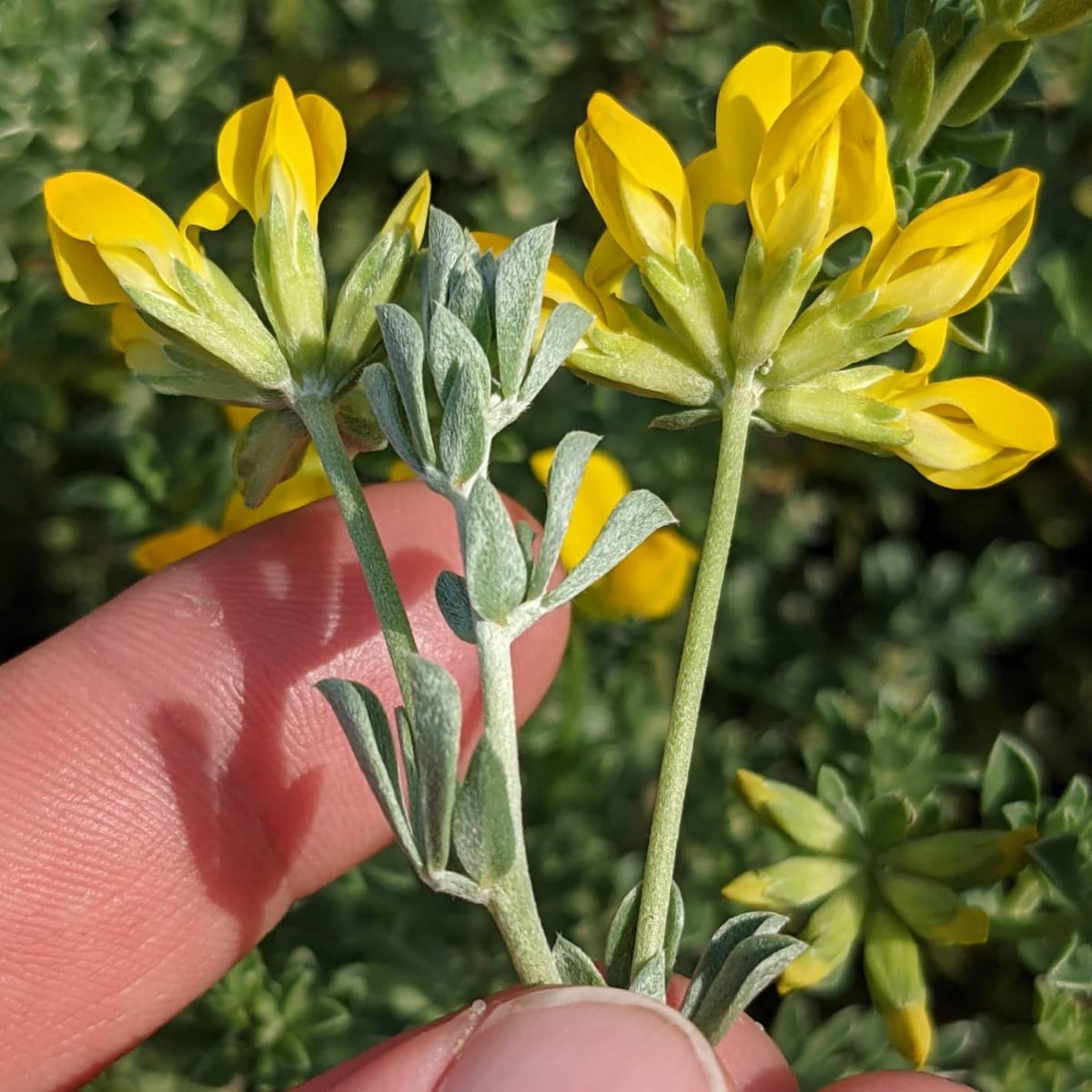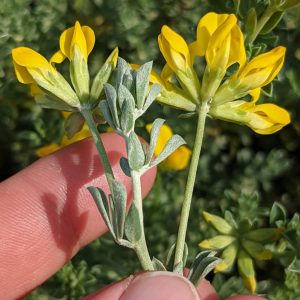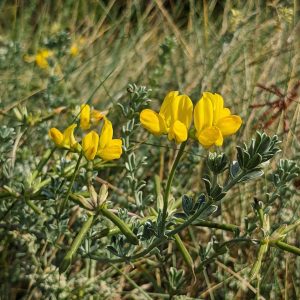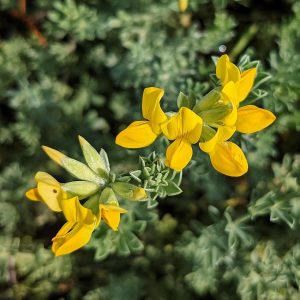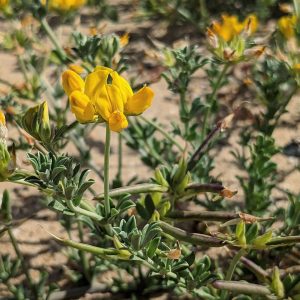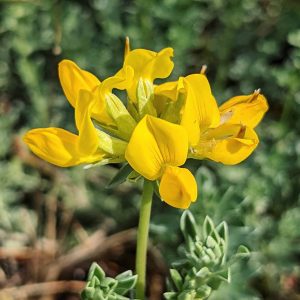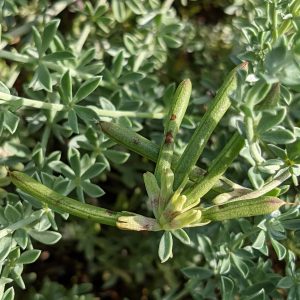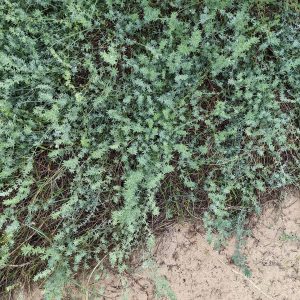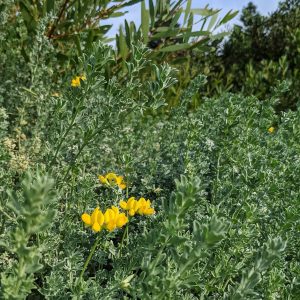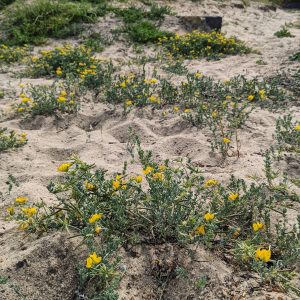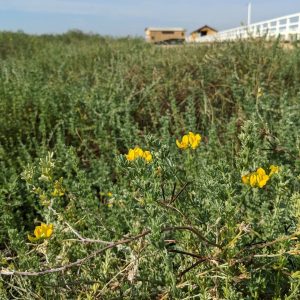Cretan Trefoil (Lotus creticus), a silvery, silken-leaved denizen of the Mediterranean strand, lately translocated to Melbourne’s exurban vacation dunes.
Other than a scattering of more far-flung European records, this is a plant whose naturalisation is effectively unknown anywhere else in the world, but is clearly underway in Melbourne’s coastal hinterland. Ground zero is the tip of the Bellarine, that nineteenth century pleasureground and gun battery at the metropole’s ocean doorstep, but there is no reason to think the species won’t gradually reach other disturbed dune sites around Port Phillip Bay and the balance of the Victorian coast.
Although there’s little evidence the plant was ever cultivated in Australia outside of a few research greenhouses, Cretan Trefoil was collected on the Narrows at Queenscliff in 1984, and is today well-established on disturbed dune environments from Point Lonsdale across to Swan Island. How it got there remains the question (sadly, we seem to be the first to raise it): was this someone’s covert garden import? a cryptic descendant of 19th century ships ballast like many of our coastal weeds? an escaped research subject? or a twentieth century accidental hitchhiker on military shipments or marine construction vessels?
Reports and records from the 1980s also place the plant at Anglesea and Frankston, so Queenscliff may not even be the plant’s original disembarkation point. The species has since been collected on Westernport, at Merricks Beach, and at Woolamai on Phillip Island. It is also present on a small patch of constructed beach at Rippleside, Geelong, perhaps as a contaminant of imported sand trucked in from the peninsula. Proclaimed belatedly in 2000 under the Commonwealth’s Quarantine Act, keep your eyes peeled for this trefoil’s next beachhead.
View Original Post on Instagram
Search for information about Lotus creticus in the Flora of Victoria
View information and occurrences of Lotus creticus on the Atlas of Living Australia
